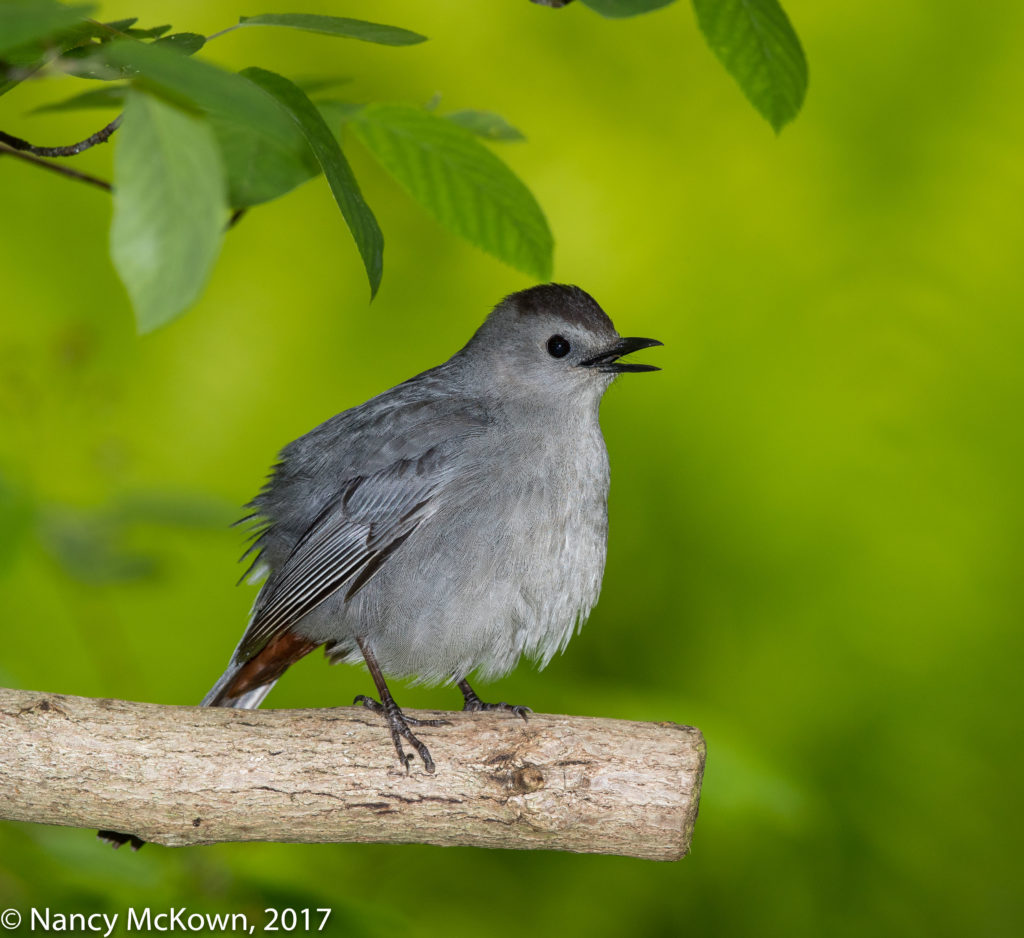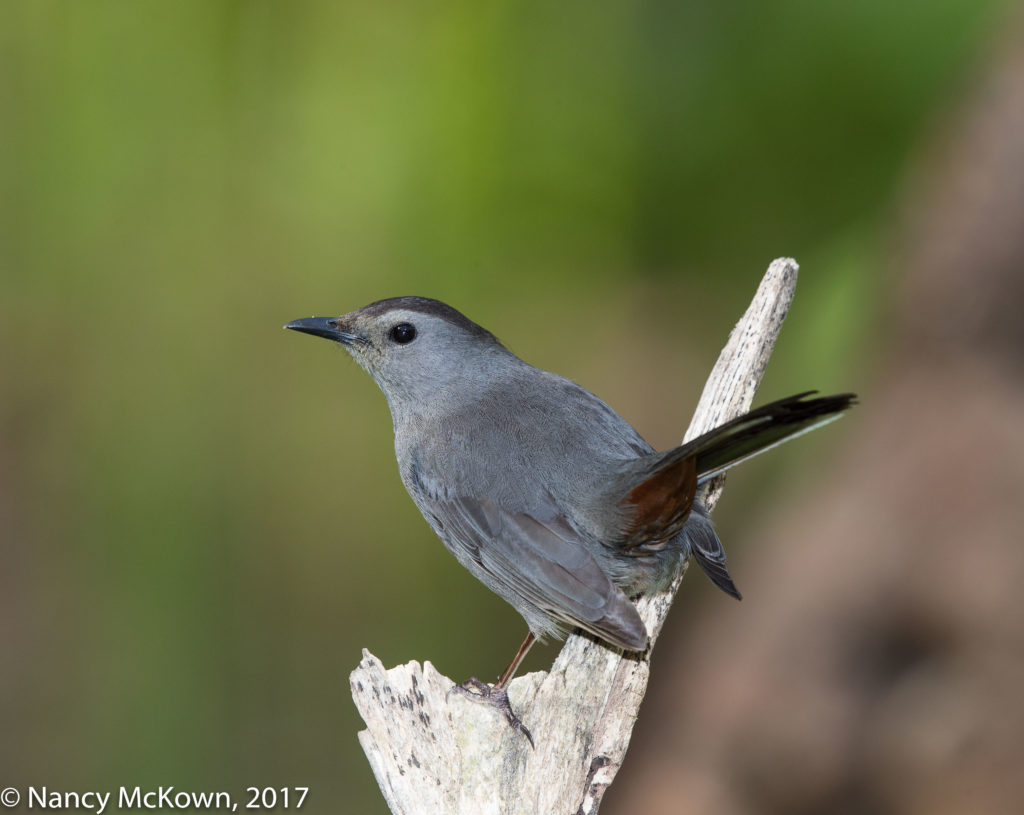Photographing A Gray Catbird
Fleeting glimpses of warbler-ish activity flash before my eyes this morning. Tiny and moving fast, ducking in and out of the foliage, I strain to track them. Reliable ID requires an image, however subpar, to ponder over and compare with the photos in my bird books. I don’t get one, not even close.
No more sightings. Instead, I turn my lens to the Gray Catbirds. A National Geographic writer commented that an upper midwest nesting Catbird may have spent “the winter in the shadow of Mayan ruins in Guatemala.” That gives me pause.
Dozens of these raucously loud and expressive song birds are flitting about, filling the air with their feline-like songs. A shared community Catbird space must have been declared for the trees and bushes around our yard. Everyone is friendly and cooperating.

All Puffed Up and Singing.
ISO400; F/9; 1/250 Second
My Flash Routine
Summer is here and the dense foliage blocks much of the sun light to the understory trees below. I attach the flash with fresnel extender to the camera. While I wait, I wonder if the light would be more natural looking if I attached the kind of camera shoe bracket that sports two or even three flash gun mounts on the top and sides of the telephoto lens.
After visualizing this setup, it seems rather too much. In order to attain enough reach, each flash unit would have to have its own better beamer type device to extend and spotlight the flash beams. The cost and effort outweigh the benefits.
My current light setup is already formidable and takes considerable time and fuss to haul around and properly set up. In sequence:
- I first mount the camera and 500mm lens with 1.4 telephoto extender on to the Gimbal Swing Arm tripod head.
- I then attach the Jobu top mounted flash bracket onto the JOBU replacement foot. (NOTE: I removed the original lens foot that came with the 500mm.)
- I secure the Canon 600 EX RT flash gun coupled with MagMod Telephoto Flash Modifier System to the top end of this bracket.
- I plug in a Vello TTL Off-shoe flash cord to connect the flash to the camera.
- I hang a FP Flashpoint lithium battery pack on the tripod and cable it to the flash.
- Last but not least, I attach the wireless trigger, just in case I need to hide. (NOTE: There’s always the hope that completely removing myself from view may bring in timid newcomers.)

Perky Tail High
ISO400; F/9; 1/250 Second
Enhancing Ambient Light
Nature photographers all must make decisions about adding/manipulating ambient light with flash. I started out proselytizing about the benefits of using only natural light…but that was just because I didn’t take the time to learn the fundamentals of good flash photography.
Bird photography opportunities abound… but many of them do not come with complementary light. Instead of waiting and waiting for the perfect circumstances, open up a whole new world by attaching a flash to your camera. There is no getting around the thought, effort and time that must be put into balancing the light—achieving a light that’s natural, subtle, warm… almost like you did not use a flash. It’s worth the effort.
An excellent article: “The Catbird Has a Simple Trick to Outsmart Deadbeat Brood Parasites”, by Audubon field editor, bird expert, environmentalist, and artist Kenn Kaufman can be found at this link.








